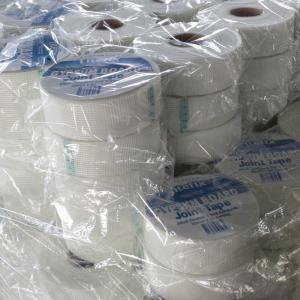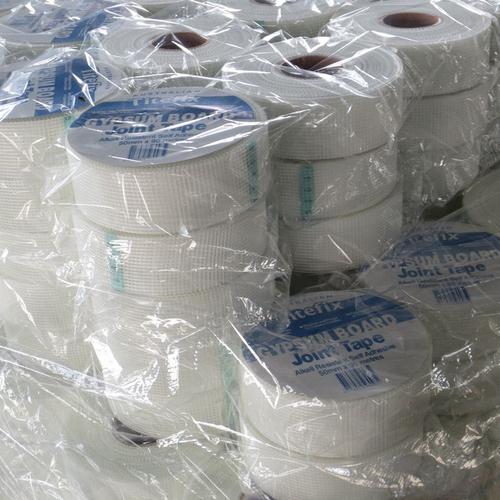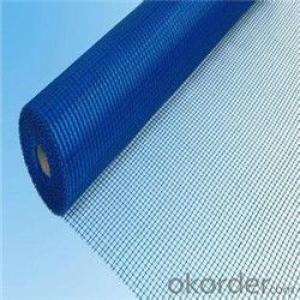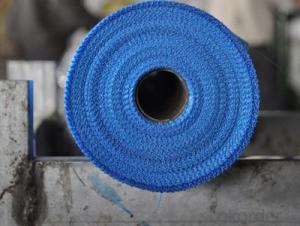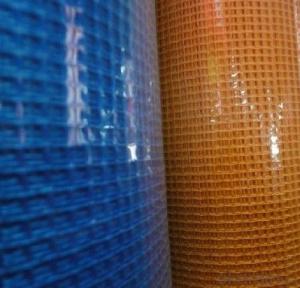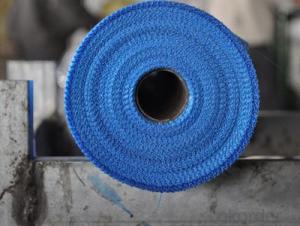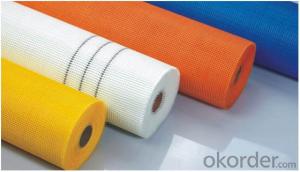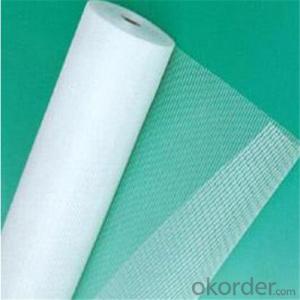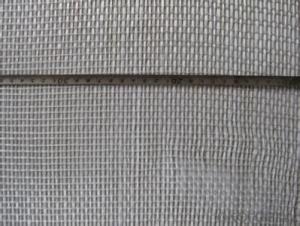High Temp Fiberglass Fabric Mesh Cloth Roll
- Loading Port:
- Qingdao
- Payment Terms:
- TT OR LC
- Min Order Qty:
- -
- Supply Capability:
- 1000000 m²/month
OKorder Service Pledge
OKorder Financial Service
You Might Also Like
Specifications
Alkali-resistant wall reinforced Fiberglass Mesh fiberglass manufacturer
Pass CE &ISO 9001
width can be 200cm
Firm mesh
The grid component
Fiberglass mesh is based on glass fiber woven fabric as substrate, the macromolecular
anti emulsion coating. It has good alkali resistance, flexibility and latitude to the high tensile
strength, with its good chemical stability, high strength, light weight, good dimensional
stability, strong impact resistance, pest control, fire protection, thermal insulation and
other features, welcomed by the user .
Use the grid cloth
Its widely used in: 1, wall reinforcing material; 2, reinforced cement products; 3, internal and
external wall insulation, 4, granite, marble, mosaic special mesh back paste network;
5, waterproof cloth, asphalt roofing; 6, reinforcing materials of plastics, rubber products;
7, fire board; 8, the grinding wheel base; 9, highway pavement with geogrid; 10, building
sealing tape etc.
- Q: How is fiberglass fabric used in the production of insulation jackets?
- Fiberglass fabric is used in the production of insulation jackets as it provides excellent thermal insulation properties. The fabric is woven from fine strands of glass, which create a tight and durable structure that helps trap and retain heat. It is commonly used as an outer layer in insulation jackets to prevent heat loss, as well as to provide protection from external elements such as moisture and abrasion. Additionally, fiberglass fabric is lightweight, flexible, and resistant to fire, making it an ideal choice for insulation jackets used in various industries.
- Q: Are fiberglass fabrics suitable for use in the agricultural industry?
- Indeed, fiberglass fabrics prove to be a fitting choice for implementation within the agricultural sector. The attributes associated with fiberglass fabrics render them optimal for usage in agricultural contexts. Primarily, fiberglass is renowned for its formidable strength and resilience, enabling it to brave the demanding conditions frequently encountered in agricultural environments. Consequently, fiberglass fabrics can be employed for a multitude of purposes, such as covering greenhouses, safeguarding crops against pests and inclement weather, and reinforcing agricultural machinery. Moreover, fiberglass fabrics possess resistance against chemicals and UV radiation, an indispensable quality within the agricultural industry due to the prevalence of fertilizers, pesticides, and exposure to sunlight. The chemical resistance guarantees that the fiberglass fabrics will remain intact and unaffected by these substances. Furthermore, UV resistance prevents the fabric from deteriorating or becoming brittle when exposed to sunlight for prolonged periods. Another noteworthy advantage of fiberglass fabrics in the agricultural realm is their fire resistance. This characteristic plays a crucial role in averting the fire's proliferation in the event of accidents or incidents involving flammable materials frequently found in agricultural settings. Furthermore, fiberglass fabrics are lightweight and effortless to handle, offering convenience for an array of applications within the agricultural sector. They can be effortlessly cut and customized to fit specific requirements, allowing for tailored solutions based on the preferences of farmers and agricultural workers. Ultimately, the combination of strength, durability, chemical resistance, UV resistance, fire resistance, and ease of handling renders fiberglass fabrics exceedingly suitable for implementation within the agricultural industry. They provide a dependable and versatile solution for diverse applications, contributing to the efficiency and productivity of agricultural operations.
- Q: What is the difference between non-woven fabrics, glass fiber cloth and geotextile?
- Advantages and disadvantages of non-woven fabrics:The non-woven fabrics have many advantages: 1) 2) 3 aeration filtration) 4) absorbent insulation waterproof 5) 6) 7) not scalable 8) unkempt feel good, soft light 9) 10) 11), elastic recovery without cloth direction 12) compared with the production of textile fabrics high production speed, low price, 13) can be produced in large quantities and so on.Disadvantages are: 1) compared with the textile cloth, strength and durability is poor, 2) can not be washed as 3 as other fabrics. The fibers are arranged in a certain direction, so it is easy to split from the right angle. Therefore, improvements in the production methods have recently been made to prevent fragmentation.
- Q: How does fiberglass fabric perform in shear strength?
- Fiberglass fabric has excellent shear strength performance. Due to its composition of intertwined glass fibers, it possesses strong resistance to forces applied parallel to its surface. The interlocking fibers create a strong and rigid structure that allows it to withstand shear stresses and prevent deformation or failure. This makes fiberglass fabric highly suitable for applications where shear strength is important, such as in the construction of lightweight, high-strength composites, reinforcement of concrete, and the manufacturing of various industrial products. Additionally, fiberglass fabric's shear strength is not significantly affected by exposure to moisture, chemicals, or high temperatures, making it a durable and reliable material for a wide range of applications.
- Q: XHJ how about neoprene asphalt waterproof coating?
- Wait for a paint, do solid work (usually for a day, summer for half a day), edge brush, paving and sticking glass fiber cloth, its work method is as follows:The paint evenly on the first line of work has the base brush, will have a glass fiber cloth placed on the top surface, gradually rolling launched just brush the paint on the brush, then stained with paint in has pasted the fiberglass cloth evenly, the glass fiber cloth firmly stuck on the base, and the entire fabric of the upper and lower diffuse full paint, paint together, to ensure the waterproof effect.
- Q: How is fiberglass fabric used in the production of sports helmets?
- Fiberglass fabric is commonly used in the production of sports helmets due to its unique properties that make it an ideal material for this purpose. Firstly, fiberglass fabric is known for its strength and durability. It provides excellent impact resistance, which is crucial for protecting the head during sports activities where collisions and falls are common. The production process involves several steps. The fiberglass fabric is first layered and molded into the desired helmet shape using a combination of heat and pressure. This allows the fabric to conform to the specific contours and curves required for a comfortable and secure fit. Furthermore, fiberglass fabric is lightweight, making it an excellent choice for sports helmets. It does not add unnecessary weight to the user's head, ensuring comfort and reducing fatigue during prolonged use. Additionally, the lightweight nature of fiberglass fabric allows for greater maneuverability and agility, which is especially important in fast-paced sports. Another significant advantage of using fiberglass fabric in sports helmets is its resistance to water and moisture. This property ensures that the helmet remains intact and functional even in wet conditions, such as during water sports or heavy sweating. Moreover, fiberglass fabric is resistant to UV radiation, preventing degradation and maintaining the helmet's structural integrity over time. Lastly, fiberglass fabric offers opportunities for customization and design flexibility. It can be easily combined with other materials or coatings to enhance specific features of the helmet, such as adding an extra layer of protection or improving its aerodynamics. In summary, fiberglass fabric is an essential component in the production of sports helmets due to its strength, durability, lightweight nature, resistance to water and UV radiation, and design flexibility. It plays a crucial role in ensuring the safety and comfort of athletes participating in various sports activities.
- Q: Are fiberglass fabrics prone to fading or discoloration over time?
- Yes, fiberglass fabrics are prone to fading or discoloration over time. While fiberglass itself is resistant to fading, the fabrics made from fiberglass can still be affected by prolonged exposure to sunlight, harsh weather conditions, and certain chemicals. Over time, the UV rays from the sun can cause the fabric to fade and lose its original color. Additionally, if the fabric comes into contact with chemicals such as chlorine or bleach, it may also experience discoloration. Regular maintenance, such as cleaning and applying protective coatings, can help slow down the fading or discoloration process, but it cannot completely prevent it.
- Q: How is fiberglass fabric used in the production of insulation sheets?
- Fiberglass fabric is used in the production of insulation sheets as it acts as a reinforcing material. It provides strength and durability to the sheets, making them capable of withstanding various environmental conditions. Additionally, fiberglass fabric helps in maintaining the shape and structure of the insulation sheets, ensuring optimal thermal performance and energy efficiency.
- Q: Are there any health risks associated with exposure to fiberglass fabrics?
- Yes, there can be health risks associated with exposure to fiberglass fabrics. Fiberglass is made of tiny fibers that are sharp and can easily become airborne when the fabric is disturbed or damaged. When these fibers are inhaled or come into contact with the skin, they can cause irritation, itching, and redness. Prolonged exposure to fiberglass fibers can also lead to more serious health issues such as respiratory problems, lung damage, and even cancer. In addition to direct contact, fiberglass fabrics can also release small particles into the air, making them a potential respiratory hazard. Breathing in these particles can cause coughing, wheezing, and shortness of breath. People with pre-existing respiratory conditions such as asthma or chronic obstructive pulmonary disease (COPD) may be particularly susceptible to these effects. To minimize the health risks associated with fiberglass fabrics, it is important to take precautions when working with or around them. This includes wearing appropriate personal protective equipment such as gloves, goggles, and a respiratory mask to prevent direct contact and inhalation of the fibers. It is also important to handle fiberglass fabrics carefully to avoid damaging them and releasing fibers into the air. If you suspect that you have been exposed to fiberglass fibers and are experiencing any symptoms such as skin irritation or respiratory issues, it is advisable to seek medical attention. A healthcare professional can assess your condition and provide appropriate treatment if necessary.
- Q: Is fiberglass fabric resistant to UV rays?
- Yes, fiberglass fabric is resistant to UV rays. Fiberglass is made from a combination of glass fibers and resin, which gives it excellent durability and resistance to various environmental factors, including UV radiation. The glass fibers used in fiberglass fabric are inherently resistant to UV degradation, making the fabric highly resistant to the harmful effects of the sun's ultraviolet rays. This makes fiberglass fabric a popular choice for applications such as outdoor furniture, awnings, boat covers, and other outdoor products that are exposed to sunlight. Additionally, fiberglass fabric's UV resistance ensures that it maintains its strength and integrity over time, even when exposed to prolonged sun exposure.
Send your message to us
High Temp Fiberglass Fabric Mesh Cloth Roll
- Loading Port:
- Qingdao
- Payment Terms:
- TT OR LC
- Min Order Qty:
- -
- Supply Capability:
- 1000000 m²/month
OKorder Service Pledge
OKorder Financial Service
Similar products
Hot products
Hot Searches
Related keywords
